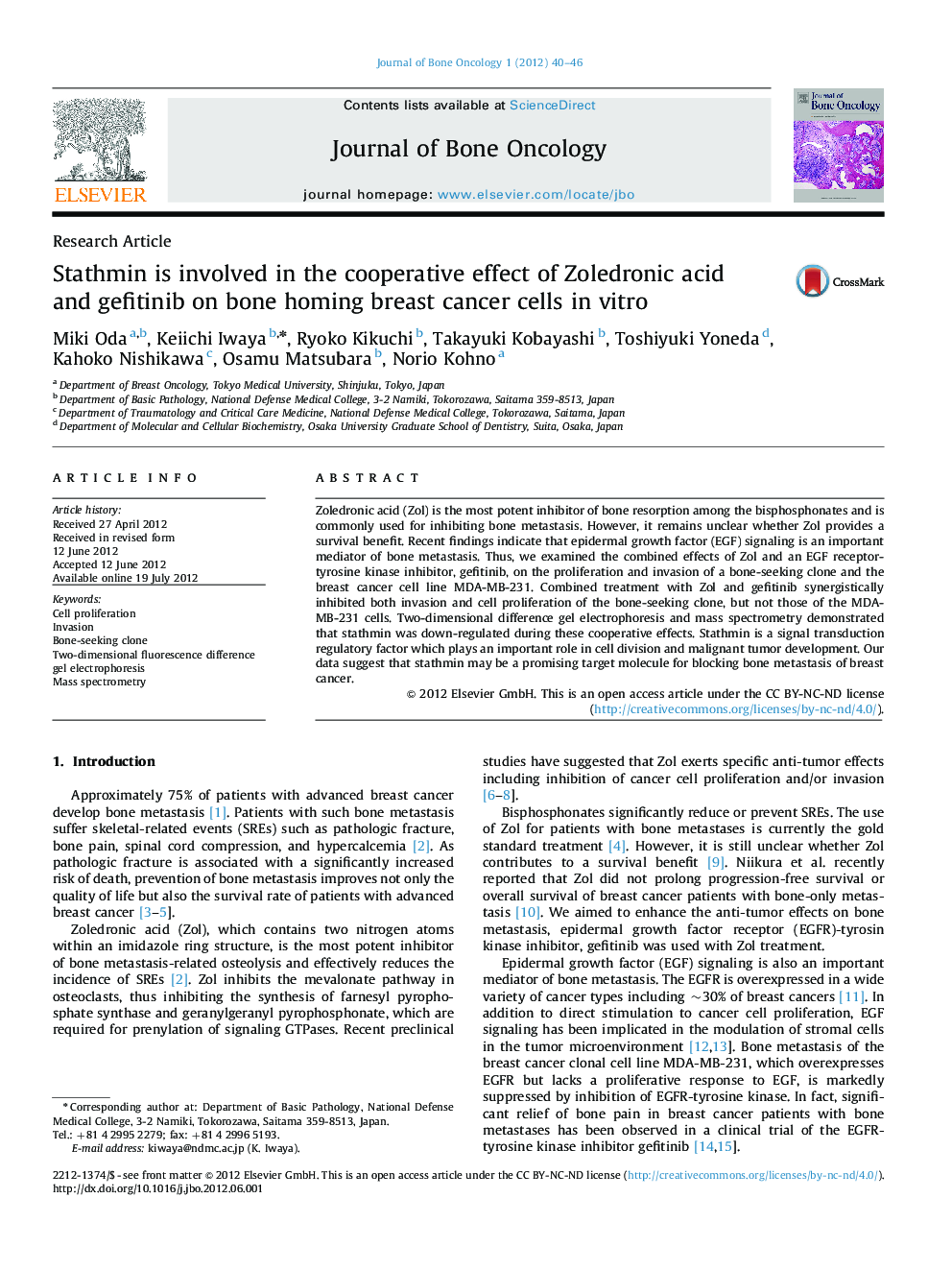| کد مقاله | کد نشریه | سال انتشار | مقاله انگلیسی | نسخه تمام متن |
|---|---|---|---|---|
| 2136157 | 1087770 | 2012 | 7 صفحه PDF | دانلود رایگان |

Zoledronic acid (Zol) is the most potent inhibitor of bone resorption among the bisphosphonates and is commonly used for inhibiting bone metastasis. However, it remains unclear whether Zol provides a survival benefit. Recent findings indicate that epidermal growth factor (EGF) signaling is an important mediator of bone metastasis. Thus, we examined the combined effects of Zol and an EGF receptor-tyrosine kinase inhibitor, gefitinib, on the proliferation and invasion of a bone-seeking clone and the breast cancer cell line MDA-MB-231. Combined treatment with Zol and gefitinib synergistically inhibited both invasion and cell proliferation of the bone-seeking clone, but not those of the MDA-MB-231 cells. Two-dimensional difference gel electrophoresis and mass spectrometry demonstrated that stathmin was down-regulated during these cooperative effects. Stathmin is a signal transduction regulatory factor which plays an important role in cell division and malignant tumor development. Our data suggest that stathmin may be a promising target molecule for blocking bone metastasis of breast cancer.
Journal: Journal of Bone Oncology - Volume 1, Issue 2, September 2012, Pages 40–46